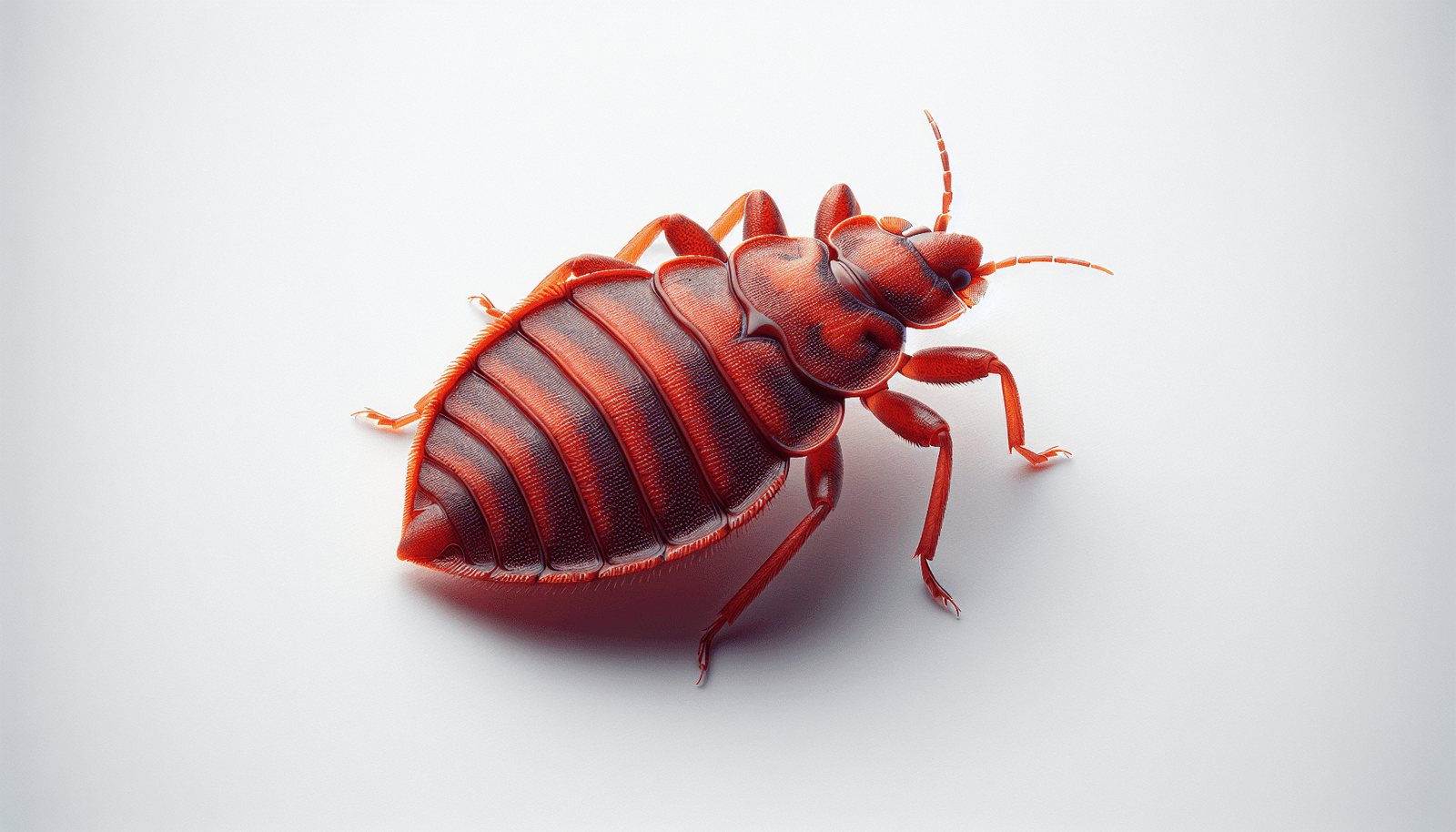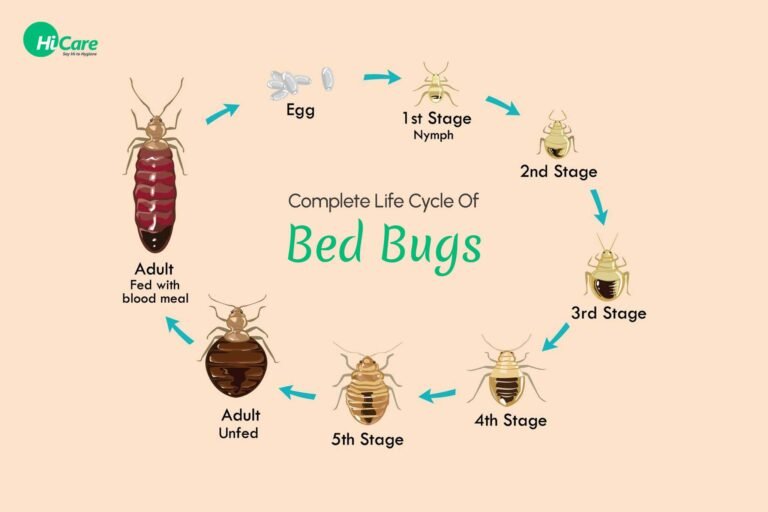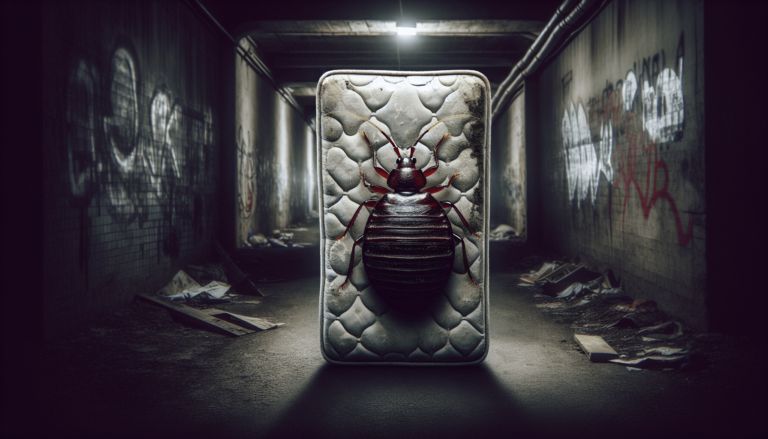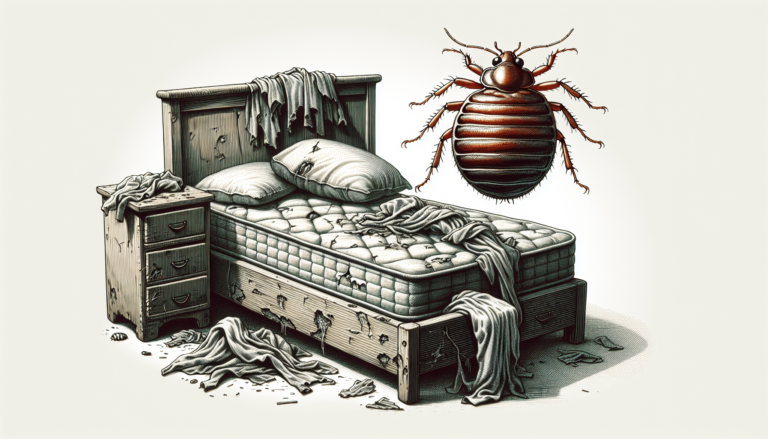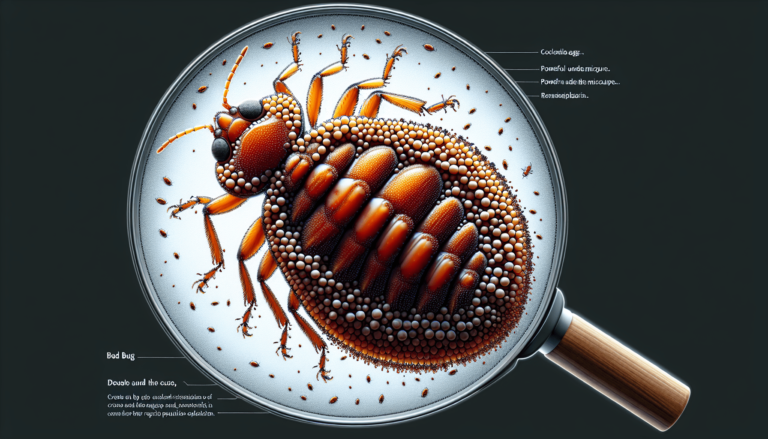What Are Bed Bugs and How Do They Affect You?
“What Are Bed Bugs and How Do They Affect You? Bed bugs, scientifically known as Cimex lectularius, are small nocturnal insects that feed on the blood of warm-blooded animals, including humans. While they are not known to transmit diseases, their presence can have significant impacts on individuals and their living environments. bed bug bites can cause skin irritation, itching, and allergic reactions in some people. Additionally, the mental and emotional stress resulting from a bed bug infestation can be substantial, leading to anxiety, sleep disturbances, and a decreased sense of well-being. Furthermore, these pests can quickly multiply and infest furniture, clothing, and other personal belongings, making it challenging to fully eradicate them. In this article, we will explore the nature of bed bugs, their effects on human health and well-being, and discuss effective prevention and eradication strategies.”

Understanding Bed Bugs
Bed bugs are small, parasitic insects that feed exclusively on blood. They are commonly found in areas where humans reside, such as homes, hotels, and dormitories. Bed bugs are nocturnal pests, meaning they are most active at night when their human hosts are sleeping. These pests are known for their ability to hide in small cracks and crevices, making them difficult to detect and eliminate.
Definition and description of bed bugs
Bed bugs, scientifically known as Cimex lectularius, are wingless insects that belong to the family Cimicidae. They are typically reddish-brown in color and have flat oval-shaped bodies. Adult bed bugs can grow up to 5-7 millimeters in length, while nymphs (immature bed bugs) are smaller in size.
Life cycle and reproduction of bed bugs
Understanding the life cycle of bed bugs is crucial for effective control and prevention strategies. Bed bugs go through a process known as incomplete metamorphosis, which includes three stages: egg, nymph, and adult.
Female bed bugs can lay hundreds of eggs throughout their lifetime. These eggs are white and approximately 1 mm in size. They are usually laid in secluded areas such as the crevices of mattresses, bed frames, and furniture. The eggs hatch after about 6-10 days, and the nymphs emerge.
Nymphs resemble smaller versions of adult bed bugs and go through several molting stages before reaching adulthood. Each nymph stage requires a blood meal to molt and develop. Nymphs become adults after five molts, and the entire life cycle from egg to adult can take anywhere from four to six weeks, depending on environmental conditions.
Exploring the habitats of bed bugs
Bed bugs can infest a variety of environments, but they are most commonly found in areas where people sleep or spend extended periods of time. This includes bedrooms, hotels, dormitories, hospitals, and even public transportation such as buses and trains. Bed bugs have a remarkable ability to adapt and survive in different environments, as they can hide and go without feeding for months.
Bed bugs are excellent hitchhikers and can infest new areas by being transported on clothing, luggage, or other personal belongings. They are attracted to the carbon dioxide and heat emitted by human hosts, making beds and sleeping areas their primary target.
Signs of Bed Bugs Infestation
Identifying the signs of a bed bug infestation is crucial for early detection and effective treatment. While bed bugs are small and adept at hiding, there are several indicators that can help you determine if you have a problem.
Physical signs of bed bugs presence
One of the most obvious signs of a bed bug infestation is the presence of live bed bugs. These pests are commonly found in the seams, crevices, and folds of mattresses, box springs, and upholstered furniture. Adult bed bugs are visible to the naked eye, and their reddish-brown bodies can sometimes be seen crawling on bedding or nearby surfaces.
Recurrent itchy welts as an indication of bed bugs bites
Bed bug bites are another telltale sign of an infestation. These bites often appear as small, itchy welts on the skin, usually in a linear or clustered pattern. Bed bugs are attracted to exposed skin during sleep and will typically feed for several minutes before returning to their hiding spots.
It is important to note that not everyone reacts to bed bug bites in the same way. Some individuals may not experience any visible symptoms, while others may develop an allergic reaction or secondary skin infections due to scratching.
Evidence of bed bugs shells and fecal matter
Bed bugs molt as they progress through their life cycle, shedding their exoskeletons multiple times. These discarded shells, known as exuviae, can often be found in areas where bed bugs hide. Additionally, bed bugs leave behind fecal matter, which appears as small dark spots or streaks on bedding, walls, or furniture. These fecal stains are typically black or dark brown in color and may smear when touched.
Bed Bugs Feeding Habits
Understanding the feeding habits of bed bugs is essential for effective prevention and control. These nocturnal pests have specific behaviors when it comes to finding and feeding on their hosts.
How bed bugs find their hosts
Bed bugs are attracted to their hosts by the warmth and carbon dioxide they emit. They can sense these cues from several feet away, allowing them to locate potential feeding opportunities. When a host is found, bed bugs use their elongated mouthparts to pierce the skin and access the blood supply. This feeding process usually takes around 5-10 minutes, after which the bed bug will return to its hiding spot to digest its meal.
The frequency and timing of bed bugs feeding
Bed bugs require regular blood meals to survive and reproduce. Depending on environmental conditions and the availability of hosts, bed bugs typically feed every 5-10 days. However, they can survive for several months without feeding if necessary. Bed bugs are most active during the night and are drawn to hosts who are asleep or immobile, as this reduces the risk of detection.
The blood-sucking nature of bed bugs
Bed bugs are specialized blood feeders, relying solely on blood for their nutritional needs. When they pierce the skin, bed bugs inject a small amount of saliva that contains an anticoagulant, helping to keep the blood flowing and prevent clotting. This saliva can sometimes cause allergic reactions in certain individuals, resulting in itching, swelling, or redness around the bite site.
Health Impact of Bed Bugs
While bed bugs are not known to transmit diseases, their presence can have a significant impact on human health and well-being.
Possible allergic reactions to bed bugs
Some individuals may develop allergic reactions to bed bug bites. These reactions can range from mild itching and redness to more severe symptoms such as blisters or hives. In rare cases, bed bug bites may trigger anaphylaxis, a severe and potentially life-threatening allergic reaction that requires immediate medical attention.
Sleep disturbance caused by bed bugs bites
Bed bugs can cause significant sleep disturbances due to their nocturnal feeding habits. The constant fear of being bitten or the discomfort caused by itchy welts can lead to anxiety, insomnia, and poor quality sleep. Lack of sleep can have a negative impact on overall health and well-being, affecting mood, cognitive function, and immune system function.
Psychological implications of bed bugs infestation
Dealing with a bed bug infestation can take a toll on a person’s mental health and emotional well-being. The stress, anxiety, and embarrassment associated with a bed bug problem can lead to feelings of isolation, shame, and depression. Individuals may also experience heightened levels of stress due to the financial costs associated with treating and preventing infestations.
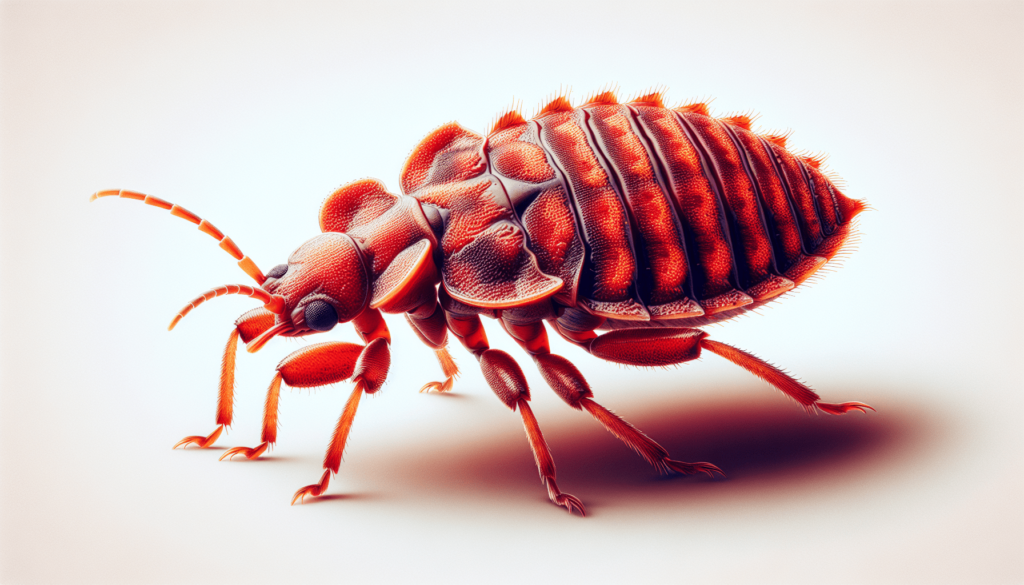
Treating Bed Bugs Bites
If you have been bitten by bed bugs, there are several remedies and treatments available to alleviate the discomfort and promote healing.
Home remedies for bed bugs bites
There are several home remedies that can help relieve the itching and irritation caused by bed bug bites. Applying a cold compress or ice pack to the affected area can help reduce swelling and inflammation. Over-the-counter hydrocortisone creams or antihistamines can also provide temporary relief from itching. It is important to avoid scratching the bites, as this can increase the risk of infection.
Over-the-counter treatments for bed bug bites
Over-the-counter topical treatments, such as calamine lotion or creams containing pramoxine or benzocaine, can provide relief from itching and discomfort. These products can be applied directly to the affected areas as needed. It is important to carefully read and follow the instructions on the packaging to ensure safe and effective use.
When to consult a medical professional
While most bed bug bites can be treated at home, there are certain circumstances when it is advisable to seek medical attention. If you develop severe allergic reactions, signs of infection (such as increased pain, swelling, or oozing), or if the symptoms persist or worsen despite home remedies, it is important to consult a healthcare professional. They will be able to assess your condition, provide appropriate treatment, and offer guidance on how to prevent future infestations.
Preventing Bed Bugs Infestation
Prevention is key when it comes to bed bugs. By taking proactive measures, you can reduce the risk of infestations and protect yourself and your home from these pests.
General tips for preventing bed bugs
- Regularly inspect your mattress, bed frame, and furniture for signs of bed bugs or their presence.
- Use protective coverings on mattresses and box springs to prevent bed bugs from infesting them.
- Avoid acquiring used furniture or mattresses without proper inspection.
- When traveling, carefully inspect hotel rooms for signs of bed bugs before unpacking.
- Keep your home clean and clutter-free, as bed bugs thrive in areas with excessive clutter.
- Seal any cracks or crevices in walls, baseboards, and furniture to prevent bed bugs from hiding.
Travel tips to avoid bringing bed bugs home
- Inspect your luggage and personal belongings for signs of bed bugs before bringing them into your home.
- Keep your luggage elevated and away from the bed or furniture in hotel rooms.
- Consider using resealable plastic bags or special bed bug-proof encasements for your luggage.
- Upon returning home, immediately wash and dry your clothing on high heat to kill any potential bed bugs.
How to effectively clean infested areas
If you suspect or confirm a bed bug infestation, it is important to take immediate action to eliminate these pests and prevent further spread.
- Begin by thoroughly cleaning and vacuuming infested areas, paying close attention to cracks, crevices, and seams.
- Use a stiff brush to scrub mattress seams and other fabric-covered furniture to dislodge bed bugs and their eggs.
- Dispose of vacuum bags in sealed plastic bags to prevent bed bugs from escaping.
- Launder infested clothing, bedding, and linens in hot water and dry them on the highest heat setting to kill any bed bugs.
Techniques of Bed Bugs Detection
Detecting bed bugs early on is crucial for effective control and eradication. There are various techniques available for detecting the presence of bed bugs.
DIY techniques for detecting bed bugs
- Thoroughly inspect your mattress, box spring, and furniture for live bed bugs, discarded shells, or fecal stains.
- Use a bright flashlight and a magnifying glass to aid in identifying small bed bug eggs or nymphs.
- Install bed bug interceptors on the legs of your bed to trap and monitor bed bug activity.
- Place double-sided sticky tape or adhesive traps near potential hiding spots to catch crawling bed bugs.
Professional bed bugs detection services
In some cases, it may be necessary to seek professional help to detect bed bugs. Professional bed bug exterminators have the experience and knowledge to effectively identify and locate bed bugs in your home. They may employ advanced techniques, such as using heat or dogs trained to detect bed bugs.
Using canine detection for bed bugs
Canine detection teams trained to sniff out bed bugs can be highly effective in locating infestations. Specially trained dogs can detect the presence of bed bugs with a high degree of accuracy, even in hard-to-reach areas. This method can be especially useful in large premises, such as hotels, where early detection is critical.
Bed Bugs Extermination Techniques
Once a bed bug infestation is confirmed, it is important to take immediate action to eliminate these pests and prevent further spread.
DIY methods for eliminating bed bugs
- Thoroughly clean and declutter infested areas to create an inhospitable environment for bed bugs.
- Use a combination of high heat and vacuuming to kill and remove bed bugs from mattresses, furniture, and cracks.
- Apply insecticides labeled for bed bug control to infested areas according to the manufacturer’s instructions.
- Seal and encase infested mattresses and box springs with special bed bug-proof covers to prevent further infestation.
Professional pest control services for bed bugs
In severe or extensive infestations, it is often necessary to seek professional pest control services. Professional exterminators have access to specialized tools, techniques, and insecticides that are not available to the general public. They can develop a customized treatment plan based on the severity of the infestation and the specific needs of your home.
Chemical-based vs heat treatment methods
Chemical-based treatments and heat treatments are two commonly used methods for bed bug extermination.
Chemical-based treatments often involve the application of insecticides to infested areas. These treatments can be effective in killing bed bugs and their eggs, but multiple treatments may be necessary to fully eradicate an infestation.
Heat treatments involve raising the temperature of infested areas to a level that is lethal to bed bugs. This method can be highly effective in killing all life stages of bed bugs, including eggs. However, heat treatments require specialized equipment and should only be performed by trained professionals.
Understanding Bed Bug Resistance
In recent years, there has been an increase in reports of bed bug resistance to commonly used insecticides. This resistance poses significant challenges for effective bed bug control and eradication.
The phenomenon of bed bug resistance to pesticides
Bed bugs have the ability to develop resistance to certain classes of insecticides over time. This resistance is believed to be primarily due to genetic changes within bed bug populations. As a result, some bed bugs may survive exposure to insecticides that once effectively killed them.
Implications of resistance on bed bugs control methods
The presence of bed bug resistance complicates the control and eradication of infestations. It may require the use of alternative insecticides or combination treatments to overcome resistance. Additionally, the development of resistance can lead to increased treatment costs, longer treatment times, and the need for multiple treatment applications.
Latest research on bed bug resistance
Researchers and pest management professionals are continually studying and monitoring bed bug resistance. This ongoing research aims to better understand the mechanisms of resistance and develop effective strategies for managing resistant bed bug populations. By staying informed about the latest research, professionals can make informed decisions about treatment options and improve overall bed bug control efforts.
Legal Implications of Bed Bugs Infestation
Bed bug infestations can have legal implications, particularly in the context of rental agreements and landlord-tenant relationships. It is important to understand the responsibilities of both tenants and landlords when it comes to bed bug infestations.
Tenant and Landlord responsibilities regarding bed bugs
Tenant and landlord responsibilities vary depending on local and state laws, as well as the terms of the rental agreement. In some jurisdictions, landlords may be responsible for providing and maintaining pest-free living conditions, including addressing bed bug infestations. Tenants are usually responsible for reporting any suspected infestations promptly and cooperating with necessary treatment measures.
Legal recourse for individuals suffering from bed bugs
In situations where a landlord fails to address a bed bug infestation or provide proper treatment, tenants may have legal recourse. They can seek remedies such as termination of the lease, rent reduction, damages, or even a court-ordered pest control intervention. It is important to consult with an attorney or local housing agency to understand the specific legal rights and remedies available in your jurisdiction.
Understanding local and state laws concerning bed bugs
Bed bug laws and regulations vary widely from one jurisdiction to another. Some states have specific statutes that address bed bug infestations, while others rely on general housing or sanitary codes to regulate pest control. It is essential to familiarize yourself with the applicable laws and regulations in your area to ensure compliance and protect your rights.
In conclusion, understanding bed bugs, their behaviors, and the signs of infestation is crucial for effective prevention, detection, and control. Bed bug infestations can impact not only physical health but also mental well-being and legal obligations. By following preventive measures, seeking early detection, and employing appropriate treatment methods, individuals can mitigate the risks and consequences of bed bug infestations. Remember to consult with professionals or legal experts when necessary to ensure efficient and compliant approaches to bed bug control.
